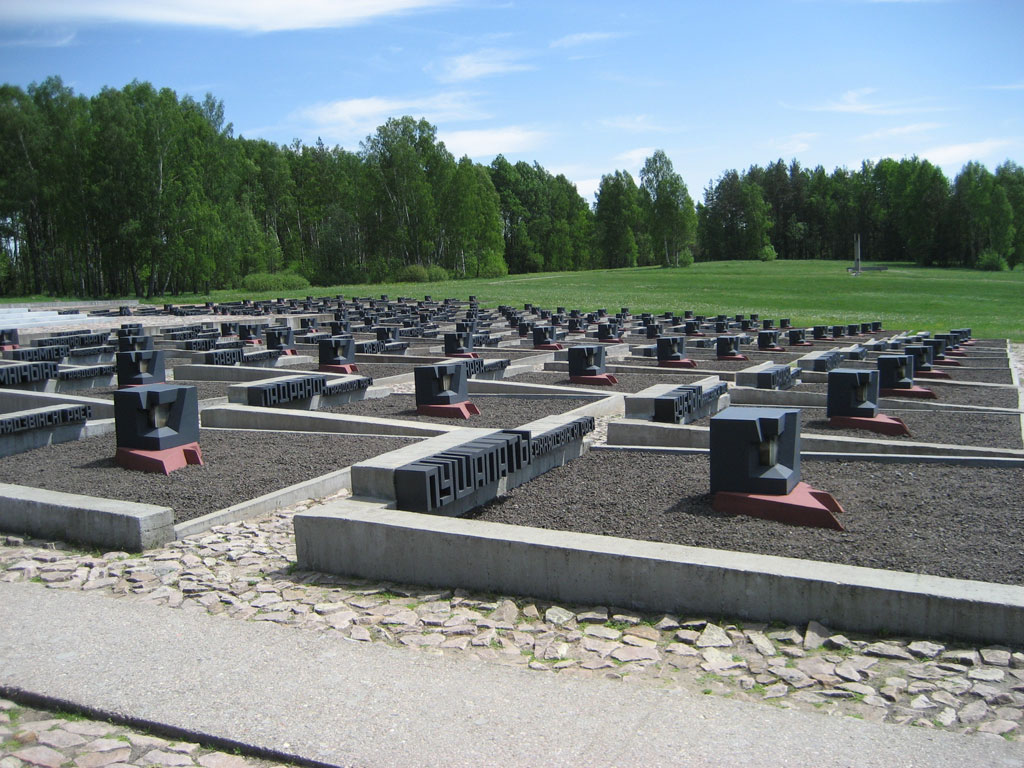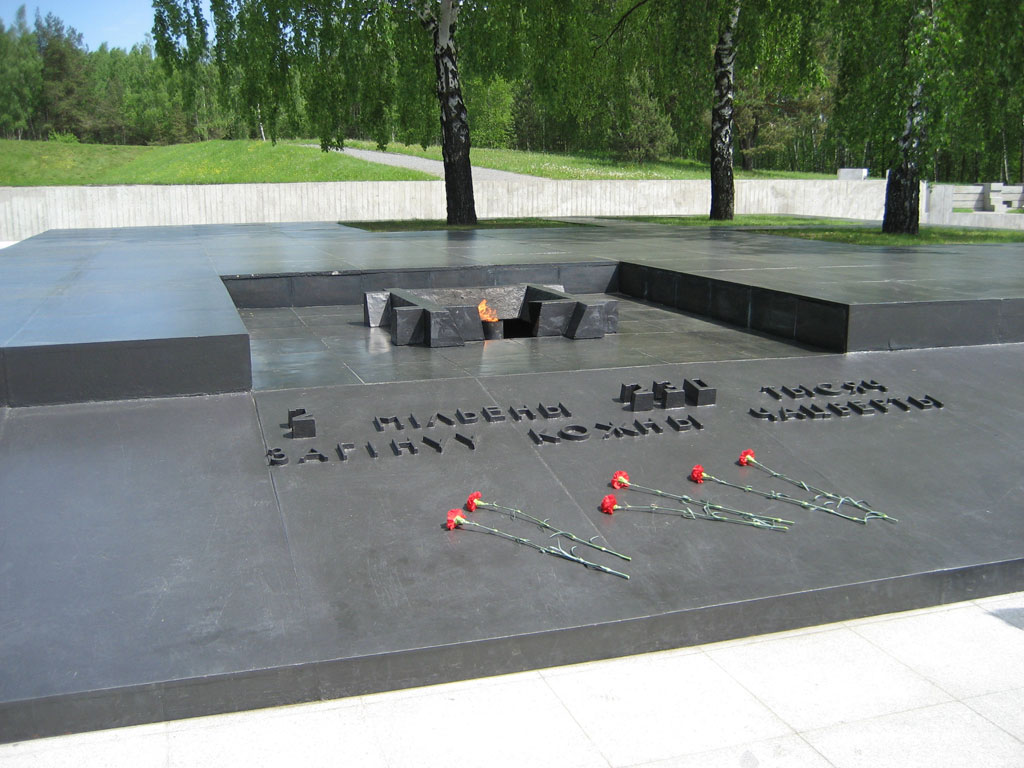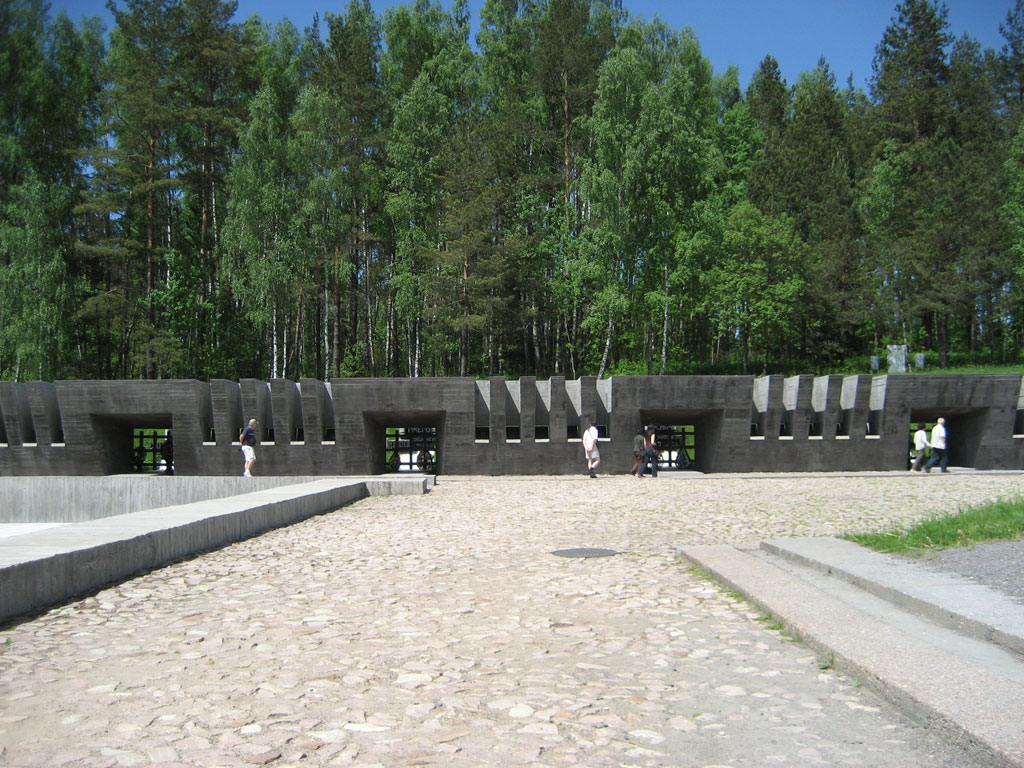National Memorial Of The Republic Of Belarus on:
[Wikipedia]
[Google]
[Amazon]


 The Khatyn national state memorial of the Republic of Belarus is the central war memorial of
The Khatyn national state memorial of the Republic of Belarus is the central war memorial of


 The Khatyn national state memorial of the Republic of Belarus is the central war memorial of
The Khatyn national state memorial of the Republic of Belarus is the central war memorial of Belarus
Belarus,, , ; alternatively and formerly known as Byelorussia (from Russian ). officially the Republic of Belarus,; rus, Республика Беларусь, Respublika Belarus. is a landlocked country in Eastern Europe. It is bordered by R ...
for all victims of the German occupation during World War II
World War II or the Second World War, often abbreviated as WWII or WW2, was a world war that lasted from 1939 to 1945. It involved the vast majority of the world's countries—including all of the great powers—forming two opposin ...
. It commemorates particularly the more than 600 "burnt villages" which, together with their inhabitants, were destroyed by the Germans throughout the war. The Khatyn massacre
Khatyn ( be, Хаты́нь, Chatyń, ; russian: Хаты́нь, ) was a village of 26 houses and 157 inhabitants in Belarus, in Lahoysk Raion, Minsk Region, 50 km away from Minsk. On 22 March 1943, almost the entire population of the vil ...
was one of them; the village lies about 60 kilometres north of Minsk
Minsk ( be, Мінск ; russian: Минск) is the capital and the largest city of Belarus, located on the Svislach and the now subterranean Niamiha rivers. As the capital, Minsk has a special administrative status in Belarus and is the admi ...
on the road to Vitebsk
Vitebsk or Viciebsk (russian: Витебск, ; be, Ві́цебск, ; , ''Vitebsk'', lt, Vitebskas, pl, Witebsk), is a city in Belarus. The capital of the Vitebsk Region, it has 366,299 inhabitants, making it the country's fourth-largest ci ...
in the Logoisky district, in the Minsk Region
Minsk Region or Minsk Oblast or Minsk Voblasts ( be, Мі́нская во́бласць, ''Minskaja voblasć'' ; russian: Минская о́бласть, ''Minskaya oblast'') is one of the regions of Belarus. Its administrative center is Minsk, ...
.
Background
Of about nine million people who fell into the hands of the Germans in Belarus, about 1.6 to 1.7 million were murdered, namely 700,000 prisoners of war, 500,000 to 550,000 Jews, 345,000 victims of the so-called partisan combat and about 100,000 members of other population groups. In addition, several hundred thousand Belarusians fell in the ranks of theRed Army
The Workers' and Peasants' Red Army (Russian: Рабо́че-крестья́нская Кра́сная армия),) often shortened to the Red Army, was the army and air force of the Russian Soviet Federative Socialist Republic and, after ...
.
More than 147,000 people died in over 5,000 villages that were completely or partially destroyed. 627 villages were totally destroyed, 186 of them not rebuilt after the war. A total of 345,000 people were killed in German partisan combat in Belarus. Nine out of ten of the victims were not partisans.
Of the total number of 5295 villages destroyed, 3% were destroyed in the first year of war in 1941, 16% in 1942, 63% in 1943 and 18% in 1944.
Frequently state visitors come here to lay a wreath in memory of the more than two million dead.
The destruction of Khatyn and the murder of the villagers was an act of revenge in response to the bombardment of a German motorcade by Belarusian partisans
The Belarusian resistance during World War II opposed Nazi Germany from 1941 until 1944. Belarus was one of the Soviet republics occupied during Operation Barbarossa. The term Belarusian partisans may refer to Soviet-formed irregular military ...
on 22 March 1943, killing the company commander, Captain Hans Woellke
Hans-Otto Woellke (18 February 1911 – 22 March 1943) was a German shot putter, who won a gold medal at the 1936 Summer Olympics and a bronze medal at the 1938 European Championships.
Woellke served with the Order Police. During World War II, ...
, and three Ukrainian members of the Battalion 118 protection team. On the same day Khatyn was plundered and destroyed by Battalion 118 and SS Special Battalion Dirlewanger. They drove the inhabitants first into the village barn, set it on fire and with machine guns shot the people who tried to save themselves from the barn. A total of 149 villagers died, including 75 children. One adult, the then 56-year-old village blacksmith Iosif Kaminskij, and five children survived the destruction of Khatyn and the Second World War
World War II or the Second World War, often abbreviated as WWII or WW2, was a world war that lasted from 1939 to 1945. It involved the vast majority of the world's countries—including all of the great powers—forming two opposin ...
. Two more girls were able to flee from the burning barn into the forest and were taken in by inhabitants of the village Khvorosteni, but then died in the destruction of that very village.
The memorial
The memorial was inaugurated on 5 July 1969. It was designed and created by the architects Yuri Gradow, Leonid Lewin, Walentin Sankowitsch and the sculptor Sergej Selichanow. The opening began with a mourning ceremony in Minsk. Delegations fromRussia
Russia (, , ), or the Russian Federation, is a List of transcontinental countries, transcontinental country spanning Eastern Europe and North Asia, Northern Asia. It is the List of countries and dependencies by area, largest country in the ...
, Ukraine
Ukraine ( uk, Україна, Ukraïna, ) is a country in Eastern Europe. It is the second-largest European country after Russia, which it borders to the east and northeast. Ukraine covers approximately . Prior to the ongoing Russian inv ...
, Georgia, Moldova
Moldova ( , ; ), officially the Republic of Moldova ( ro, Republica Moldova), is a Landlocked country, landlocked country in Eastern Europe. It is bordered by Romania to the west and Ukraine to the north, east, and south. The List of states ...
and other republics of the Soviet Union
The Soviet Union,. officially the Union of Soviet Socialist Republics. (USSR),. was a transcontinental country that spanned much of Eurasia from 1922 to 1991. A flagship communist state, it was nominally a federal union of fifteen national ...
, from the then twin cities and other foreign guests took part in the ceremony and the trip to Khatyn. This village represents the many destroyed villages in Belarus. The survivor Kaminskij also spoke at the opening ceremony.
The renovation and reconstruction of the State Memorial "Khatyn" was completed in July 2004, on the occasion of the 60th anniversary of the "Liberation of Belarus from the German-Fascist Conquerors" in Khatyn, which was commemorated in the presence of the Presidents of Belarus, Aljaksandr Lukashenka, Russia, Vladimir Putin
Vladimir Vladimirovich Putin; (born 7 October 1952) is a Russian politician and former intelligence officer who holds the office of president of Russia. Putin has served continuously as president or prime minister since 1999: as prime min ...
, and Ukraine, Leonid Kuchma
Leonid Danylovych Kuchma ( uk, Леоні́д Дани́лович Ку́чма; born 9 August 1938) is a Ukrainian politician who was the second president of Ukraine from 19 July 1994 to 23 January 2005. Kuchma's presidency saw numerous corrup ...
. In July 2004, a photographic exposition was inaugurated at the memorial, commemorating Khatyn, Maly Trostenez and the Ozarichi concentration camp as another example.
The memorial contains many symbols, the three most important of which are probably the memories of Khatyn, the cemetery of the burnt villages and the trees of the rebuilt villages.
Furthermore, the "eternal flame" burns in a large black granite stone block on which three birches grow.
This symbolizes the fact that about a quarter of all Belarusian inhabitants died in the Second World War.
Everywhere in the area where the houses of Khatyn village once stood, their floor plans are indicated by concrete beams embedded in the ground. A symbolic chimney juts out into the air as a reminder of each fire ruin. A bell strikes every thirty seconds together with all the other bells in the chimney steles commemorating the destroyed houses. The number and ages of the victims are recorded at each house. At the entrance of the symbolic village there is a six-metre-high bronze sculpture depicting Iosif Kaminskij carrying his dead son Adam in his arms. Behind the sculpture there is also a symbolic reproduction of the village barn, which commemorates the annihilation of the village population.
The cemetery of the burned villages looks like the burial grounds on any modern cemetery. Uniform rows of graves and identical type of lettering. But each of the 185 graves represents a village that was destroyed in the so-called punitive operations. On each grave there is an urn filled with native soil and an inscription with the name of the village and the name of the district where the village used to be, which remained extinct after the war.
The names of 433 Belarusian villages, burned like Khatyn but rebuilt after the war, are immortalized like branches on symbolic "trees of life". In the Logojskij district alone, 21 villages and their populations were burned down. After the war 11 villages were rebuilt.
In a long memorial wall, memorial plates with the names and deaths of the concentration camps and extermination sites in Belarus were placed in niches. The path along this wall commemorates over 260 death camps and mass extermination sites of the German SS, the Ordnungspolizei
The ''Ordnungspolizei'' (), abbreviated ''Orpo'', meaning "Order Police", were the uniformed police force in Nazi Germany from 1936 to 1945. The Orpo organisation was absorbed into the Nazi monopoly on power after regional police jurisdiction w ...
and the Wehrmacht
The ''Wehrmacht'' (, ) were the unified armed forces of Nazi Germany from 1935 to 1945. It consisted of the ''Heer'' (army), the ''Kriegsmarine'' (navy) and the ''Luftwaffe'' (air force). The designation "''Wehrmacht''" replaced the previous ...
.
References